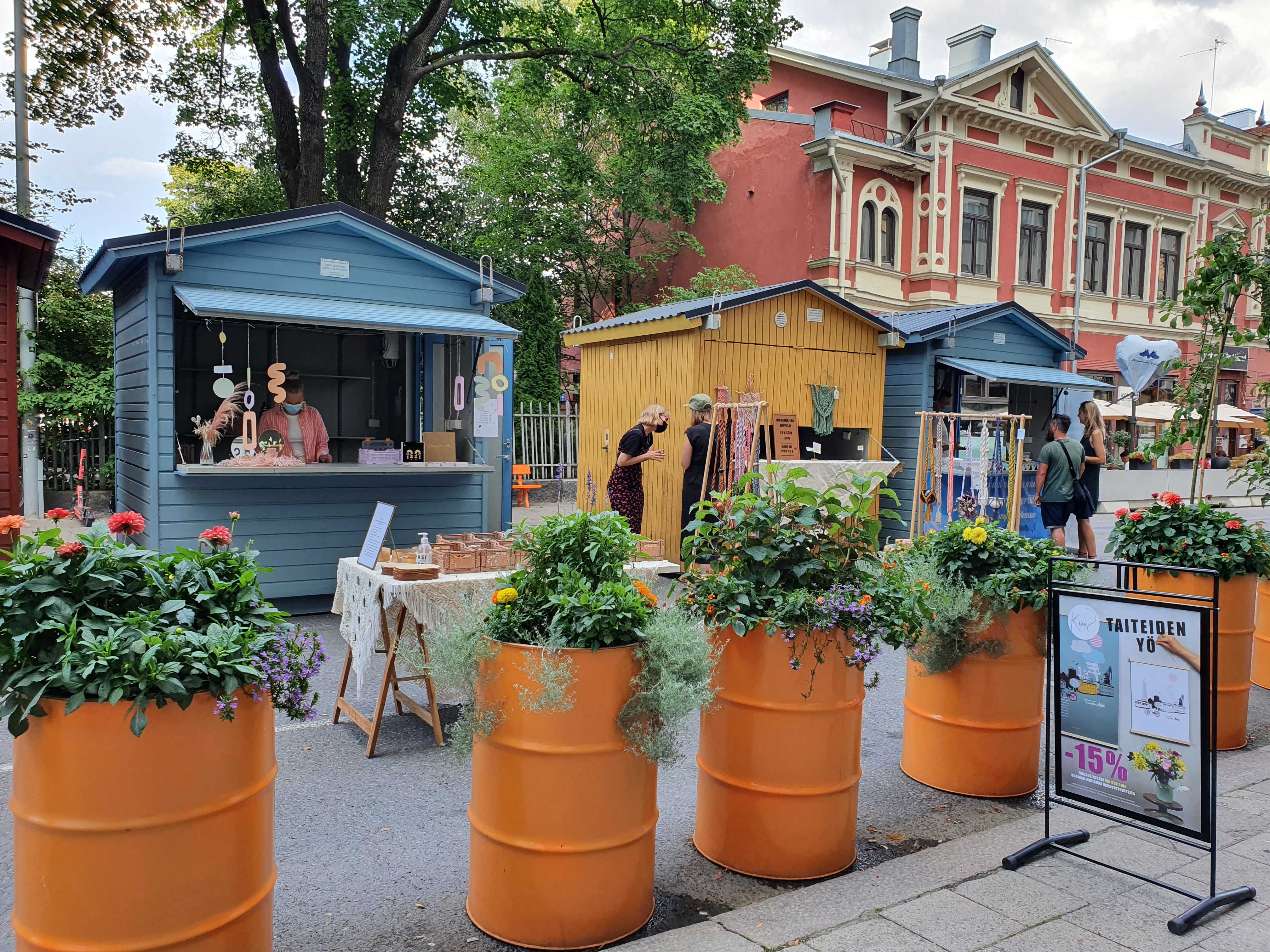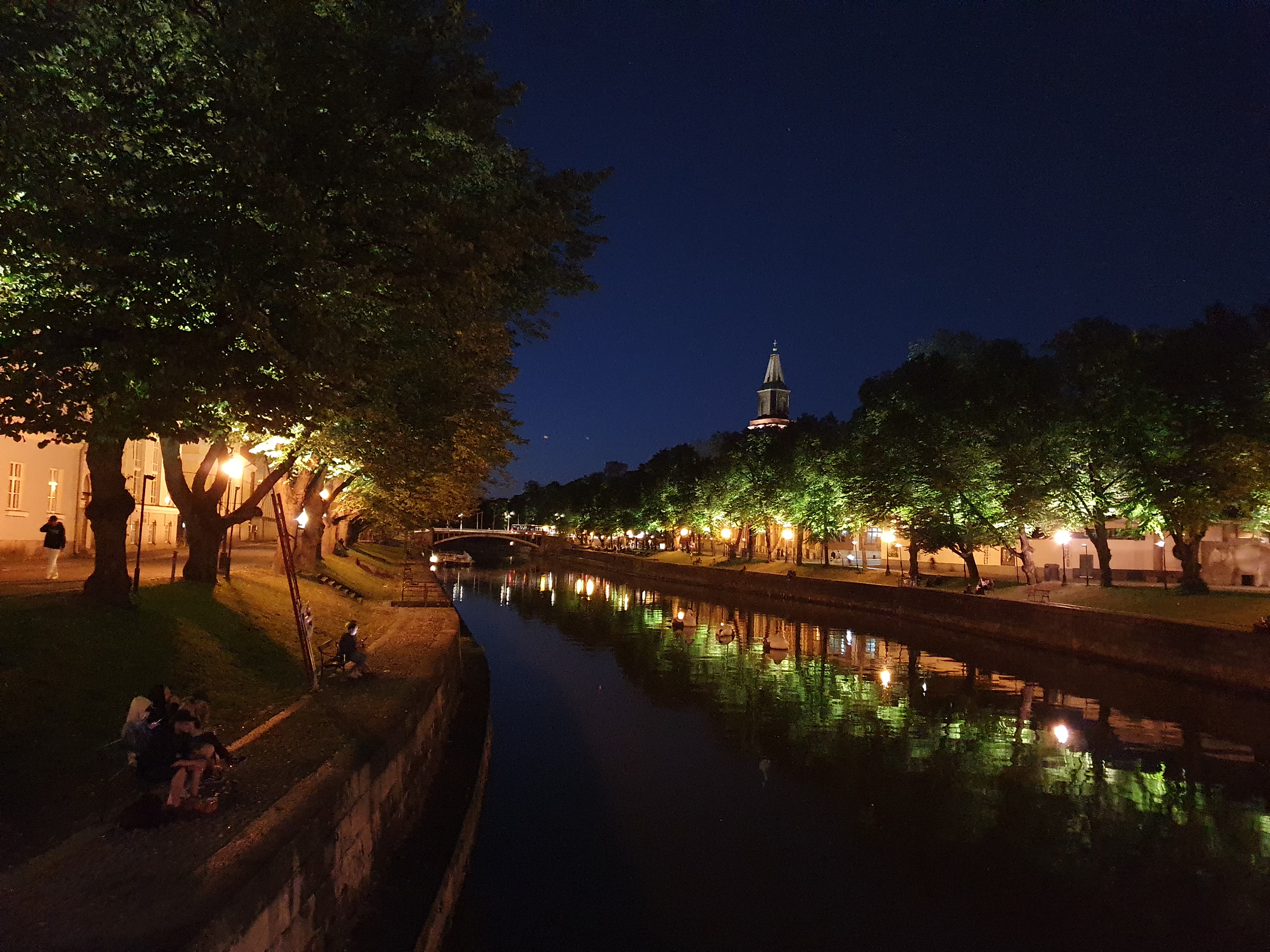Space4People – The Case of Turku
Edited on
13 June 2022The measures set out in Turku’s Climate Plan 2029 and Turku City’s transport system plan 2020 aim at carbon neutrality. The city’s goal of low-carbon sustainable transport cannot be achieved without a significant increase in the share of sustainable modes of transport. In order to achieve the carbon neutrality goal, the share of walking, cycling and public transport in Turku must be more than 66% in 2030 (currently 49%). The city has also set a target of 2% annual growth in both cycling and pedestrian volumes. In 2020, Turku was found to be behind its target. Turku is a compact city with short distances, which creates good conditions for walking as a mode of transport on business, work and study trips as well as on leisure trips. However, Turku still has a lot to do in developing the use and pleasantness of the street space and in utilising the potential of Turku’s historically layered and interesting urban space as the focus of city life. Therefore, in Space4People Turku chose to focus on finding out which concrete measures would help to encourage citizens to walk more and spend time in public spaces.

Challenges
Although it has been recognised that increasing walking has great benefits such as less emissions, improved air quality and impacts on citizens health and well-being there has not been a clear plan how to promote walking. Turku has prepared a development programme for walking and cycling in 2010. However, in 2018 a separate development programme for cycling replaced the old programme and there was a need to prepare own for walking. Part of the challenge for Turku is also the perception of people, stakeholders and politicians. Some stakeholders are consequently reluctant to any changes of public space in terms of car accessibility. At political level, Turku sees the situation of two blocks facing each other, one emphasising the need of car accessibility and one being more open to other forms of public space use. This is to some extend also present in the city population. How to convince them that prioritizing people over cars in planning has wider societal benefits and pedestrians and people spending time in urban spaces make the area more vibrant and enable encounters? In the end, everyone is a walker, and walking is part of all travel chains.
Objectives
The work in Turku was started with the URBACT local group by defining a vision and objectives. The common vision set for the work was: “Turku’s urban space is planned on the terms of walking and leisure areas, so that it is functional, safe, attractive and pleasant for everyone.” Furthermore, three main goals were defined. Firstly, walking and leisure areas should be taken better into account in planning. Secondly, comfortable and safe routes should be offered all-year round. Thirdly, a culture that encourages walking and spending time in the city should be more actively promoted. The target year of the development programme is 2029 and it focuses mainly on the current city centre. Based on the vision, the work was started to define concrete measures that would best to promote walking as attractive mode and would improve quality and usability of the public spaces. It was stated already in the beginning that the planned actions should combine different measures targeted to infrastructure improvements, mobility management and services improvements. There was also a need to increase cooperation between different sectors as well as better involve citizens and other group in defining measures.
In action
times in remote workshops during the preparation of the programme. The smaller working group that led the process consisted of city representatives responsible for urban planning, traffic planning and maintenance, development of mobility services and city centre development. The covid pandemic changed the original plans to organise physical meetings and therefore it was more difficult to maintain especially those groups interested that were not professionally working with the topic. However, the vision, objectives, and measures of the programme for pedestrian and public spaces in Turku were mostly worked on in the larger working group.
The work resulted in concrete measures and proposals. During the process it was recognised that there is a need to reserve dedicated resources - both financial and staff - to plan and implement measures related to walking. More attention should be paid to targets related to quality of the urban space in all stages of planning from detailed planning to implementation of the street plans. The general aim is that walking is smooth, pleasant and easy around the year. One important part of the programme will be a network plan that maps and prioritises routes that need further development. The work also resulted in concrete proposals for how to improve accessibility and safety of the urban environment to allow equal use conditions for all user groups. It was also recognised that citizens should be encouraged more actively to explore the city by foot with different campaigns and communication means. Different pilots and temporary activities were seen as important tool to allow testing different planning solutions but also to offer experiences and activities to citizens.
One example of a temporary experiment was the small-scale pilot – Kristiinankatu Summer street – that was implemented in 2021. During a period of 2 months one street in the city centre was closed for car traffic, only access to logistics operators and residents were allowed. The street space was equipped with plants and benches. Different activities such as youth summer market were organised. The experiment was planned together with entrepreneurs, residents, and other operators on the street. The experiment raised lot of media attention and sparked a wider discussion on important issues related to the development programme, such as sustainable modes of transport and the use and quality of street space. In May 2022, the city environment board decided to expand the summer street for summer 2022 despite opposition of certain commercial actors in the centre. Majority of entrepreneurs on the summer street and the general public supported the continuation.

The target year of the development plan is 2029 and it will be implemented in cooperation with several units in the city. The development programme will be still complemented with a list of possible investments concerning the pedestrian network and public spaces. The city board will make a decision on the adoption of the programme in autumn 2022.
Conclusions
When Space4People project and the development plan for walking and public spaces was started, it was noticed that many strategies and programmes have targets concerning walking but information concerning e.g. number of pedestrians, citizens opinions about the pedestrian network or public spaces or statistics related to safety were scattered in different places. A systematic approach to promote walking was missing. The main achievement of the process is that walking is now better recognised as its own mode and there is wider awareness of what measures should be taken if the city wants to promote more active lifestyle among its citizens. It is also evident that cooperation between different departments within the city but also with citizens, local actors and other expert organisations is needed to plan such measures and ensure implementation of the programme.
Lessons learnt and transferablility
The Summer Street pilot in Turku and the feedback and discussion around that showed that although there is always criticism toward any measure concerning transformation of public spaces (and restricting access for cars), cities should be brave to explore and test new measures and plan urban environment for people and not cars. These types of experiments may require lot of resources for planning and coordination but help to raise public discussion on the use of public space and show the positive change. The quality factors of walking and spending time in an area are largely the same – in other words, the quality factors of an urban space that create a pleasant walking environment also create urban spaces that invite people to stay and be. A good environment for walking is not only about creating a network of pedestrian routes. It is also about increasing safety and equality, increasing the pleasantness of the environment by adding lightning, green infrastructure and places to rest and having interesting things to look at. Walking is not just one mode of transport but pedestrians and people spending their leisure time in the city are indicators of urban life.

Submitted by Claus Kollinger on
